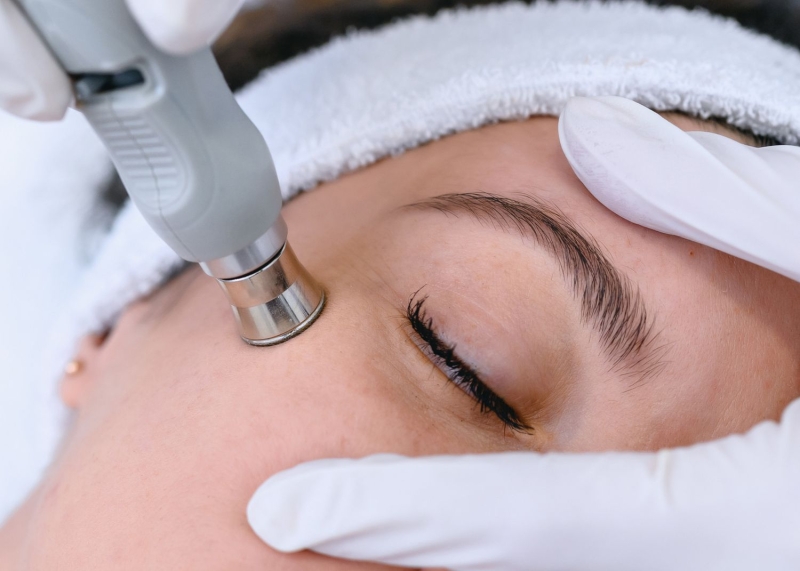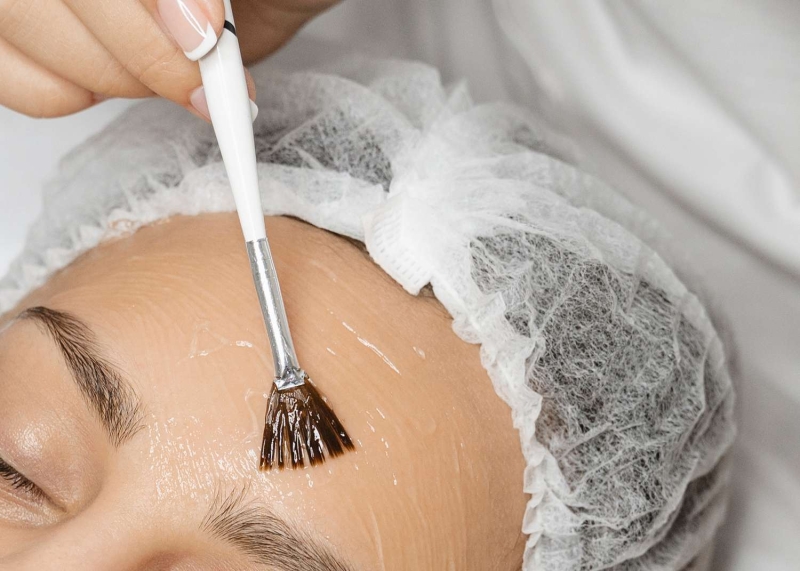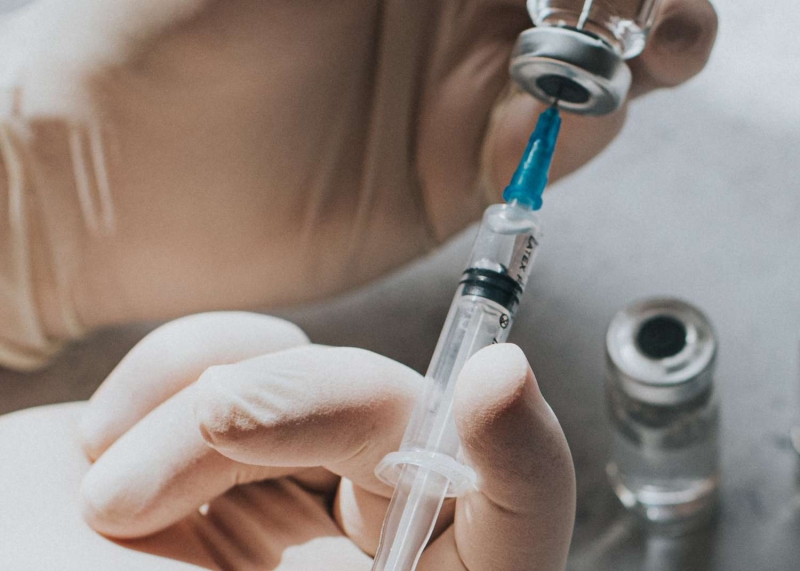Contents

Aging skin is inevitable. Over time, the skin’s natural ability to stay hydrated and smooth on its own decreases, while volume and contours are diminished. The skin’s natural production of collagen and oil declines, and there’s cellular degradation from the cumulative effects of both external and internal aggressors over time. The good news is that a proactive approach can play an important role in how your skin ages. You can strengthen your skin’s natural defenses against environmental assaults (including UV damage and pollution) and reverse the natural decline of collagen production and cellular turnover.
In addition to sticking with an effective anti-aging skin-care routine, it may also be helpful to consult a plastic surgeon, esthetician, or dermatologist. The experts can offer in-office anti-aging treatments that can help improve your skin’s texture and elasticity as well as smooth out fine lines and wrinkles, lessen pigment overproduction, and more. . “There are many non-surgical treatments, including chemical peels, light-laser treatments, radiofrequency, and microneedling, as well as neuromodulators and hyaluronic fillers that allow patients to achieve their anti-aging treatment goals,” says Lyle Leipziger, MD, chief of plastic surgery at North Shore University Hospital and LIJ Medical Center in Long Island, New York.
Below, you’ll find an expert-approved anti-aging guide to address your skin-care concerns now and in the future.
Ultrasonic Skin Tightening
Dr. Leipziger’s current go-to recommendation for anti-aging treatment is the in-office Sofwave device, which is FDA-approved to help lift the eyebrows and neck — and also spur collagen production to help reduce fine lines and wrinkles. “Sofwave uses unique synchronous parallel ultrasound energy to firm and tighten the tissues of the face,” he explains. “The ultrasound energy is delivered through a handpiece that is held parallel to the skin and is able to cover a greater amount of skin than previous ultrasound techniques. Plus, there is a built-in cooling feature to keep the skin from overheating, as well as improve patient comfort during the treatment.”
Chemical Peels

"A chemical peel is performed by applying a chemical solution to typically the face, hands, and neck in order to remove the top layer of the skin to improve its quality, texture and tone,” Dr. Leipziger explains. “Chemical peels can also reduce fine lines and wrinkles, treat hyperpigmentation, and help correct discoloration from sun damage.” While at-home peel pads are common, an in-office peel will contain a significantly higher level of the same active ingredient, often an AHA or glycolic acid. The professionals will also decide how long to leave it on depending on your skin type and concerns, and how often you need to come back for maintenance.
Neuromodulators
Muscle-relaxing injections like Botox, Daxxify, Xeomin, or Dysport “work to soften the appearance of dynamic lines and wrinkles formed as a result of repeated facial expressions,” says Dr. Leipziger. This class of wrinkle-relaxing injections “relax and prevent the overuse of targeted muscles that create a tired, heavy facial look plus reduce the appearance of fine lines and wrinkles,” explains Ariel Ostad, MD, a dermatologist and cosmetic surgeon in New York City. Take note that the line-smoothing effects can often take one to two weeks to show up fully, and maintenance is required as the smoothness will fade over time. The frequency of touchups required is based on a number of factors: age, intensity of lines, the desired effect, and even just how long it lasts in your skin specifically. The pros say most patients come in every three to five months.
Hyaluronic Acid Fillers

“Hyaluronic acid fillers harness the power of the naturally occurring substance found in our body to redefine and rejuvenate your facial contours,” explains Dr. Ostad. “Hyaluronic acid is a molecule found in the body that plays a crucial role in maintaining skin hydration, and as we age, skin produces less hyaluronic acid, leading to loss of elasticity and firmness.”
Applying Juvederm, Restylane, and Revanesse Versa to targeted areas of the face will boost volume, impart fullness to lips, and mimic a youthful plumpness — all while minimizing hollowing, especially in the cheeks, under the eyes, and around the mouth. “By injecting hyaluronic acid fillers, we can restore volume in certain areas and provide long-lasting results while revitalizing your overall appearance,” he says. Although results are instant, they can continue to set in up to two weeks post-injection and remain for several months or longer.
Laser Skin Rejuvenation
“Laser skin resurfacing improves overall skin appearance by making the skin look smoother and more vibrant,” Dr. Leipziger says. “Additionally, with broad band light (BBL) and laser technology, our patients receive beautiful results with little to no downtime and very little discomfort.”
There are many proven treatments in this category with a long track record of efficiency, but Dr. Ostad is a fan of the Fraxel Restore laser. “Fraxel is a non-ablative laser that treats the skin’s underlying layer without harming the surface. This laser triggers natural collagen production to create firmer, more youthful skin,” he says. Because the heat of the device is somewhere between uncomfortable and slightly painful while the treatment is occurring, your pro will apply a topical numbing cream to the entire face prior to the session. The intense heat sensation, minor swelling, and redness will subside approximately three hours post-treatment. “A series of Fraxel Restore laser treatments can improve tone, texture and radiance in aging, scarred, or sun-damaged skin,” Dr. Ostad adds.
For several days post-Fraxel, skin will begin to create tiny, dark scabs (almost like tiny coffee grinds) that peel and fall off naturally, revealing new, healthy skin days later. Along with gentle cleansing, your pro may recommend using a calming cream or ointment while skin heals. “The intensity and duration of your side effects will depend on your healing characteristics as well as the aggressiveness of your treatment, but can take one to two weeks,” says Dr. Ostad, who recommends three sessions spaced one month apart, depending on your goals.
Marina Peredo, MD, a dermatologist with Skinfluence, a private practice in New York City, says she’s a fan of a new FDA-cleared procedure in her NYC office. “Recently, I started working with a high-energy, fractionated non-ablative laser device called MIRIA,” she says. “It’s different from anything else I’ve seen — it’s great for patients with sun damage, loss of volume, acne scarring, skin laxity, and more. Even better, it works on all skin types and colors.” And unlike many other lasers, she says that the cooling portion, which goes to about -10C, helps minimize discomfort during the treatment as well as the downtime afterward.
Another appealing laser to help treat a broad range of aging skin concerns is the PicoWay laser. “The PicoWay laser is an advanced laser that uses ultra-short picosecond pulses that’s an ideal laser for anti-aging, tattoo removal, and benign pigmentation including age spots, sun spots, and freckles,” Dr. Ostad explains. Though you may experience some redness in the treated areas immediately after the procedure, this side effect will subside within a few hours. You may also experience peeling of darker spots at the treatment site, which is a normal part of the process. Dr. Ostad says it’s important to note that results are not immediate. “You will see gradual improvement to your skin. Most patients take six to eight weeks for their results to become final,” he says.
Radiofrequency and Microneedling
Dr. Peredo reports that Morpheus8 (which combines microblading with radio frequency) is a device she's often using on patients for tightening, improving skin texture, and decreasing inflammation. “It uses the trauma of needle wounding combined with the heat of radio frequency,” she explains. Dr. Ostad also finds Morpheus8 can “target energy deep into the skin, stimulating collagen production and triggering a natural healing response,” he says. “During a Morpheus8 procedure, a numbing cream is used to provide comfort, and each session typically lasts about 20 to 30 minutes depending on the area or areas being treated.” What’s unique about this device is it’s used all over, from the face and neck to the décolleté, as well as arms, abdomen, knees and more. While it’s possible to see minor changes to the skin shortly after treatment, he explains that the maximum results may take time to be noticeable. “The body is producing new collagen over the course of several months,” he says.
Frequently Asked Questions
- Are at-home devices beneficial anti-aging treatments?
Shani Darden, a celebrity skincare pro and founder of her namesake skincare line Shani Darden Skin Care speaks to the power of utilizing at-home versions of some proven and previously in-office-only anti-aging treatments. “Non-invasive treatments such as vibration therapy, LED light therapy, and radiofrequency are becoming even more popular in contrast to harsher, more invasive, expensive treatments that require a lot of downtime,” she explains. “My LED Light Mask uses clinically proven wavelengths of red, blue, and near-infrared light in 10-minute timed doses to stimulate cellular response to help clear mild to moderate acne, target pigmentation, and boost collagen production to visibly diminish wrinkles and give the skin the most amazing glow.”
- Why is seeking out a trained professional for in-office anti-aging treatments important?
“I help patients build out a multimodality treatment plan based on age and specific skin needs and goals that can be implemented over time—I look at each patient with an aesthetic eye in order to determine how to best sculpt and refine their appearance,” Dr. Leipziger says. “From there I select the right injectables, laser treatments as well as skincare products that will produce the refinements that they are looking for and that I believe will enhance their natural look.”
- Why should you have a solid at-home skin-care routine?
According to the pros, it’s crucial to harness the power of proven topicals and stick to a regimented morning and nighttime anti-aging skincare routine that targets a broad range of skin concerns. “At every age, I recommend that all patients follow a daily skincare regimen that includes moisturizers, antioxidants, and potentially retinol to keep their skin looking youthful,” says Dr. Leipziger. This ensures you get the most out of your in-office treatments.

